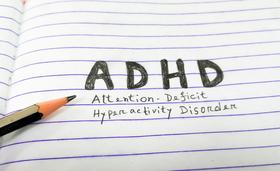For the 2024 school year, there are 3 public schools serving 433 students in Hull-Daisetta ISD School District. This district's average testing ranking is 2/10, which is in the bottom 50% of public schools in Texas.
Public Schools in Hull-Daisetta ISD School District have an average math proficiency score of 15% (versus the Texas public school average of 37%), and reading proficiency score of 29% (versus the 42% statewide average).
Minority enrollment is 21% of the student body (majority Black and Hispanic), which is less than the Texas public school average of 74% (majority Hispanic).
Overview
This School District
This State (TX)
# Schools
3 Schools
9,180 Schools
# Students
433 Students
5,427,157 Students
# Teachers
41 Teachers
369,136 Teachers
Student : Teacher Ratio
11:1
11:1
District Rank
Hull-Daisetta ISD School District, which is ranked #1065 of all 1,196 school districts in Texas (based off of combined math and reading proficiency testing data) for the 2020-2021 school year.
The school district's graduation rate of 80% has decreased from 90% over five school years.
Overall District Rank
#1019 out of 1198 school districts
(Bottom 50%)
(Bottom 50%)

Math Test Scores (% Proficient)
15-19%
37%

Reading/Language Arts Test Scores (% Proficient)
31%
42%

Graduation Rate
≥80%
89%

Students by Ethnicity:
Diversity Score
0.37
0.64
# American Indian Students
4 Students
18,023 Students
% American Indian Students
1%
n/a
# Asian Students
1 Student
261,795 Students
% Asian Students
n/a
5%
# Hispanic Students
36 Students
2,860,548 Students
% Hispanic Students
8%
53%
# Black Students
40 Students
694,244 Students
% Black Students
9%
13%
# White Students
341 Students
1,427,308 Students
% White Students
79%
26%
# Hawaiian Students
n/a
8,476 Students
% Hawaiian Students
n/a
n/a
# Two or more races Students
11 Students
156,763 Students
% of Two or more races Students
3%
3%
Students by Grade:
# Students in PK Grade:
27
244,977
# Students in K Grade:
27
371,233
# Students in 1st Grade:
28
385,986
# Students in 2nd Grade:
33
383,594
# Students in 3rd Grade:
35
384,793
# Students in 4th Grade:
36
385,943
# Students in 5th Grade:
33
389,980
# Students in 6th Grade:
27
400,481
# Students in 7th Grade:
32
418,819
# Students in 8th Grade:
31
424,568
# Students in 9th Grade:
26
476,074
# Students in 10th Grade:
32
408,889
# Students in 11th Grade:
32
389,524
# Students in 12th Grade:
34
362,296
# Ungraded Students:
-
-
District Revenue and Spending
The revenue/student of $21,076 is higher than the state median of $13,640. The school district revenue/student has grown by 28% over four school years.
The school district's spending/student of $16,208 is higher than the state median of $14,384. The school district spending/student has grown by 12% over four school years.
Total Revenue
$9 MM
$74,029 MM

Spending
$7 MM
$78,063 MM

Revenue / Student
$21,076
$13,640

Spending / Student
$16,208
$14,384

Best Hull-Daisetta ISD School District Public Schools (2024)
School
(Math and Reading Proficiency)
(Math and Reading Proficiency)
Location
Grades
Students
Rank: #11.
Hull-daisetta High School
(Math: 30-39% | Reading: 40-49%)
Rank:
Rank:
6/
Top 50%10
117 N Main Hwy 770
Daisetta, TX 77533
(936) 536-6321
Daisetta, TX 77533
(936) 536-6321
Grades: 9-12
| 124 students
Rank: #22.
Hull-daisetta J High School
(Math: 11-19% | Reading: 50-59%)
Rank:
Rank:
5/
Bottom 50%10
117 N Main Hwy 770
Daisetta, TX 77533
(936) 536-6321
Daisetta, TX 77533
(936) 536-6321
Grades: 7-8
| 63 students
Rank: #33.
Hull-daisetta Elementary School
(Math: 6-9% | Reading: 10-14%)
Rank:
Rank:
1/
Bottom 50%10
7243 Fm 834e
Daisetta, TX 77533
(936) 536-6667
Daisetta, TX 77533
(936) 536-6667
Grades: PK-6
| 246 students
Frequently Asked Questions
How many schools belong to Hull-Daisetta ISD School District?
Hull-Daisetta ISD School District manages 3 public schools serving 433 students.
What is the rank of Hull-Daisetta ISD School District?
Hull-Daisetta ISD School District is ranked #1065 out of 1,196 school districts in Texas (bottom 50%) based off of combined math and reading proficiency testing data for the 2020-2021 school year.
What is the racial composition of students in Hull-Daisetta ISD School District?
79% of Hull-Daisetta ISD School District students are White, 9% of students are Black, 8% of students are Hispanic, 3% of students are Two or more races, and 1% of students are American Indian.
What is the student/teacher ratio of Hull-Daisetta ISD School District?
Hull-Daisetta ISD School District has a student/teacher ratio of 11:1, which is lower than the Texas state average of 15:1.
What is Hull-Daisetta ISD School District's spending/student ratio?
The school district's spending/student of $16,208 is higher than the state median of $14,384. The school district spending/student has grown by 12% over four school years.
Recent Articles

How “Collaborative Reasoning” Could Be the Next Public School Trend
Collaborative reasoning, which encourages independent critical thinking, is growing in popularity amongst public schools. Learn about collaborative reasoning and how it benefits public school classrooms.

Understanding ADHD in Children: Signs, Diagnosis, and Support Strategies
This comprehensive article explores the complex nature of attention-deficit/hyperactivity disorder (ADHD) in children, providing insights into its symptoms, diagnosis process, and effective support strategies. From recognizing early signs to navigating the diagnostic journey, parents will gain valuable knowledge to help their child thrive. Expert insights, real-life examples, and practical tips empower readers to create a supportive environment that meets the unique needs of children with ADHD.

March 04, 2024
Teaching in Contemporary TimesWe explore why individuals choose teaching, illuminating intrinsic motivations, the influence of role models, the pursuit of lifelong learning, and the aspiration to impact society.





